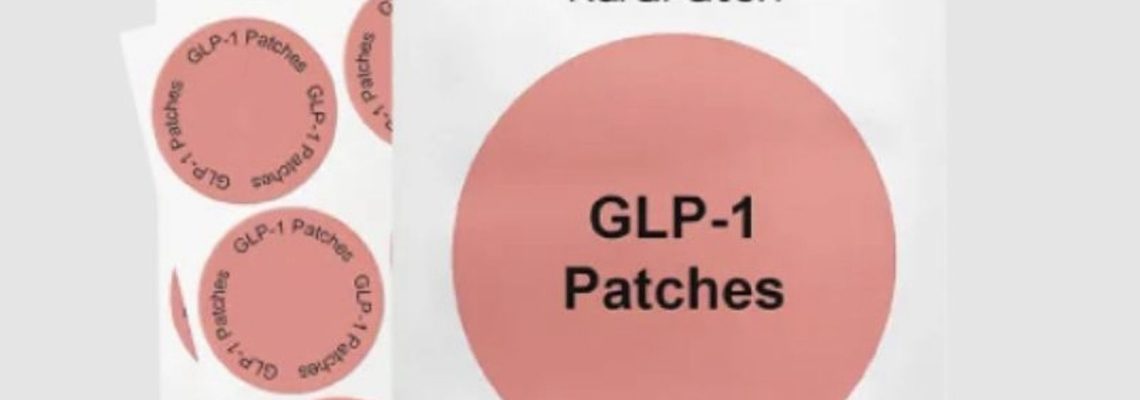
“GLP-1 NuraPatch” (or patches marketed as GLP-1 patches). Since “NuraPatch” does not currently appear in scientific literature or regulatory sources as a well-defined product, much of the content is based on what is known about GLP-1 therapies, the claims around GLP-1 patches, and the skepticism from the medical community. If you had a particular version or brand in mind, I can adapt this accordingly.
What is GLP-1 and Why It’s Important
GLP-1 (Glucagon-Like Peptide-1) is a naturally occurring hormone secreted by the intestines in response to food intake. Its main actions include:
Stimulating insulin secretion (in a glucose-dependent manner)
Inhibiting glucagon release
Slowing gastric emptying
Promoting satiety (feeling of fullness)
These properties make GLP-1 and its analogs effective in treating type 2 diabetes and, more recently, in managing obesity. Several GLP-1 receptor agonist drugs (like semaglutide, liraglutide) are approved and widely used in clinical settings.
What Are GLP-1 “Patches” (e.g. “NuraPatch”)
A “GLP-1 patch” refers to a transdermal patch (i.e., a skin patch) that is marketed as delivering GLP-1–like effects (weight loss, appetite suppression, metabolic improvement) without injections or pills. Some of the marketed names include “GLP-1 Nano Patch,” “GLP-1 Patches,” etc. For example, NutraPeaks sells a “GLP-1 Nano Patch” for body shaping and firming.
The proposition is that you apply the patch on your skin (arm, torso, etc.), and its active ingredients are absorbed transdermally, thereby exerting systemic effects.
➤➤GLP-1 NuraPatch – Official Website Link ?– Click Here ◀◀
Key Claims Versus Scientific Reality
Here’s a breakdown of what the marketing often claims, versus what science and medical experts currently support:
Claims
Mimics the effects of prescription GLP-1 drugs (appetite suppression, weight loss)
Needle-free, more convenient
Fewer side effects
Uses herbal or natural ingredients that act as “GLP-1 stimulants”
Works over several hours / days
Scientific and Regulatory Concerns
-
No Real GLP-1 in Patches / Not FDA Approved
GLP-1 receptor agonist medications (like semaglutide) are large peptide molecules. Their structure makes them poorly absorbable through skin, and they require formulation, stability, and delivery methods (e.g. injections or specially designed oral forms). There is currently no FDA-approved GLP-1 patch.
Poor Transdermal Absorption
-
The outermost skin barrier (stratum corneum) limits what kinds of molecules can be delivered transdermally. Large peptides and charged molecules usually can’t pass through effectively. Experts say skin absorption of substances such as herbal extracts is possible for some compounds, but the amounts are typically extremely low.Ingredient Uncertainty and Limited Evidence
-
Most GLP-1 patches or weight-loss patches contain a mix of herbs, stimulants (e.g. caffeine), plant extracts (e.g. green tea, garcinia), but not actual GLP-1 analogs. The clinical evidence supporting their effectiveness is weak or absent.
-
Regulation and Safety
Since these patches are often marketed as dietary supplements rather than drugs, they are not held to the stringent standards of safety, efficacy, and quality control required for prescription medications. This raises concerns about accuracy of active ingredient content, purity, and potential interactions or side effects.
Placebo / Behavioral Effects
-
Some of the weight changes or health improvements claimed by users may be due to placebo effects, concurrent diet/exercise changes, or natural fluctuations, rather than a true pharmacologic effect of the patch. Media coverage has also flagged that some of these patches are being heavily marketed on social media/influencer platforms despite lacking strong evidence.
➤➤GLP-1 NuraPatch – Official Website Link ?– Click Here ◀◀
Hypothetical Mechanics of a “NuraPatch / GLP-1 Patch”
If a product called NuraPatch is following the pattern of existing GLP-1 patches, its design likely includes:
Adhesive skin patch backing
Microneedle or nano-delivery layer (to penetrate the skin surface)
Active compounds (probably herbal extracts, or botanical stimulants)
Claim to release over several hours
But because the core active is unlikely to be an actual GLP-1 analog (which would require much more sophisticated pharmaceutical formulation), it is probably marketed as providing a “GLP-1–like effect” via indirect pathways (e.g. stimulating metabolism, mild appetite suppression via herbal ingredients).
Risks, Caveats, and Considerations
-
Skin irritation / allergic reaction: The adhesive or herbal compounds might cause dermatitis.
-
Drug interactions: If the patch contains stimulants or botanicals, these could interact with medications (e.g. stimulants + antihypertensives).
-
False expectations: People may delay or avoid medically appropriate treatments in favor of a patch.
-
Lack of evidence: The user may spend money on a product whose benefits are speculative.
-
Regulatory issues: Claims may overshoot what is allowed for supplements; mislabeling is possible.
What Currently Works (Evidence-Based Alternatives)
If your goal is metabolic health, weight loss, or glycemic control, here are approaches with solid evidence:
-
Lifestyle changes
-
Balanced, reduced-calorie diet
-
Regular physical activity (a mix of aerobic + strength training)
-
Adequate sleep, stress management
-
-
Prescription GLP-1 therapies (when medically indicated)
-
Drugs like semaglutide, liraglutide, tirzepatide, etc., under physician supervision
-
-
Adjunct supports
-
Behavioral therapy, dietitian-led plans
-
Monitoring and medical follow-up
-
➤➤GLP-1 NuraPatch – Official Website Link ?– Click Here ◀◀
Conclusion & Take-Home Message
At present, a product called “GLP-1 NuraPatch” (if it exists) would likely fall into the same category as other over-the-counter “GLP-1 patches”: marketed as a noninvasive alternative to injections, but lacking rigorous scientific evidence and regulatory approval. Existing knowledge of GLP-1 biology and transdermal pharmacology suggests it’s unlikely that a patch can effectively deliver GLP-1 analogs into the bloodstream in clinically meaningful quantities.
If you are considering NuraPatch (or similar), I’d advise caution. Consult a healthcare professional, scrutinize the claims, and ask for clinical evidence supporting the product.
If you like, I can draft a polished article version (for blog, magazine, etc.) about “GLP-1 NuraPatch” (with pros, cons, evidence) for your audience. Do you want me to write that for you?


Leave Your Comment